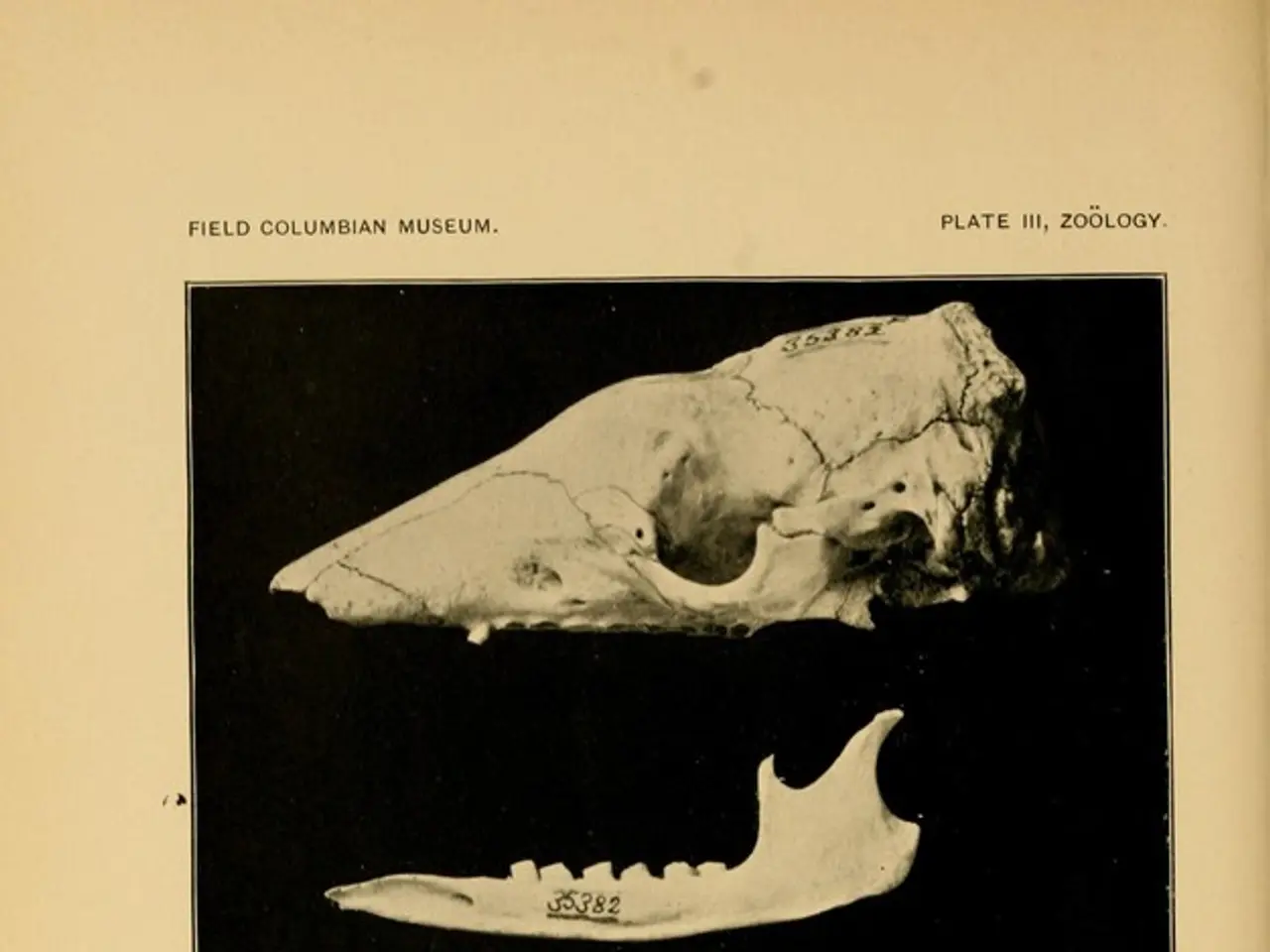RNA Aggregation in Neurodegenerative Disorders: Novel Approaches for Therapeutic Intervention
In the realm of neurodegenerative disorders like Huntington's disease and Amyotrophic Lateral Sclerosis (ALS), a significant breakthrough has been made in understanding the formation of harmful RNA clusters within brain cells. These clusters, which act as molecular sponges that sequester proteins essential for neuronal health, contribute to disease progression [1].
Researchers have discovered that these RNA clusters are formed inside biomolecular condensates, liquid-like droplets within cells. The RNA clusters form solid-like aggregates over time, with disease-linked "repeat RNAs" accumulating inside these condensates [1].
Two potential strategies have emerged to combat these harmful RNA clusters.
Antisense Oligonucleotides (ASOs)
ASOs are synthetic RNA strands designed to hybridize specifically to the pathological RNA within these harmful aggregates. Their binding physically disrupts these RNA clusters, causing them to dissolve inside cells. This approach has been experimentally demonstrated to break apart RNA clumps in neurodegeneration models [1].
RNA-binding Proteins (e.g., G3BP1)
Naturally, RNA-binding proteins such as G3BP1 regulate RNA assemblies such as stress granules by binding and remodeling RNA-protein complexes. Modulating these proteins' activity or harnessing their RNA-binding properties may help prevent or clear harmful RNA clusters, although detailed therapeutic strategies remain under exploration [1].
This dual approach—direct targeting of RNA aggregates by ASOs and the natural modulation of RNA clusters by RNA-binding proteins—offers promising avenues to combat aggregation-linked neurodegenerative diseases by restoring normal RNA-protein dynamics and preventing toxic clumps that damage neurons [1].
Basic and clinical research continues to push these molecular approaches closer to real-world treatments. However, it's important to note that no approved or easily accessible treatment currently exists to directly dissolve RNA clumps in these diseases outside of experimental ASO therapies in clinical trials.
Patients and families can consider enrolling in trials or exploring emerging therapies under expert guidance, while relying on comprehensive care to manage symptoms.
Lithium orotate, a form of lithium salt, has shown potential in neuroprotection, but its role in directly addressing RNA clumps in diseases like Huntington's or ALS has not been demonstrated.
This research enhances our understanding of RNA's behavior within cells and the fundamental physics of biomolecular condensates, opening new frontiers in biology, synthetic biology, and medicine. The recognition of RNA's capacity to form both beneficial biological structures and harmful disease-associated aggregates is a significant step forward in the fight against neurodegenerative diseases.
References:
[1] ScienceDaily: "Scientists crack the mystery of brain cell clumps, and make..." (2025)
- In the field of health and wellness, the breakthrough in understanding the formation and behavior of harmful RNA clusters in neurodegenerative disorders like Huntington's disease and ALS is contributing to the development of science-based approaches for managing medical-conditions associated with these neurological disorders.
- The discovery of RNA's dual role in both forming beneficial structures within cells and contributing to the formation of harmful clusters in neurological disorders paves the way for advances in medical science and the development of new treatments for a range of health-and-wellness challenges, particularly those related to neurological disorders.




